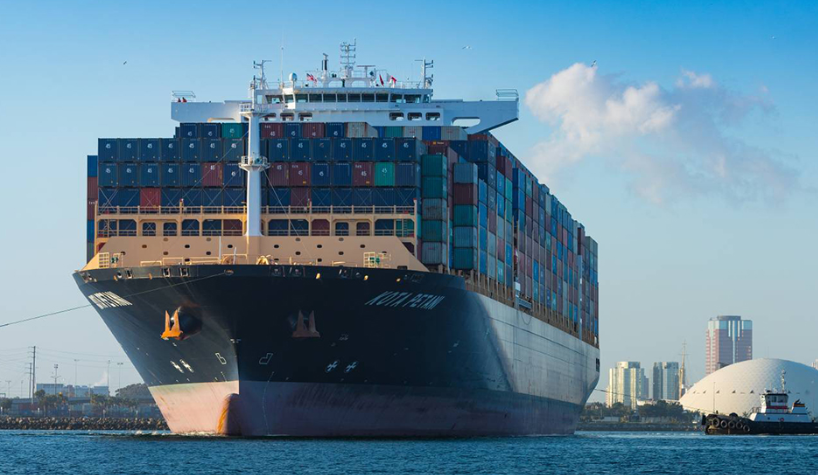Logistics

July 14, 2018
Update on Tariffs, Tolls and Trade
Written by Sandy Williams
The industries that move the nations’ freight are scrambling to find ways to mitigate risks from U.S.-imposed tariffs and foreign-imposed retaliatory tariffs that will impact supply lines and trade flow. Volatility seems to be the new normal as industries face uncertainty over international trade conflicts.
Ports Prepare for Tariff Disruptions
 The Trump administration’s addition of $200 billion in tariffs on Chinese imports is expected to affect 37.3 percent of TEU cargo imports to the United States, bringing the total impact of the tariffs to 47.5 percent or 5.1 million TEU, says an analysis of data from PIERS. The Port of Los Angeles and Long Beach will be hit hardest by the tariff with 37.6 percent or 1.9 million TEU of its volume at risk, followed by the New York-New Jersey and Savannah ports with 8.3 percent and 7 percent TEU exposure, respectively.
The Trump administration’s addition of $200 billion in tariffs on Chinese imports is expected to affect 37.3 percent of TEU cargo imports to the United States, bringing the total impact of the tariffs to 47.5 percent or 5.1 million TEU, says an analysis of data from PIERS. The Port of Los Angeles and Long Beach will be hit hardest by the tariff with 37.6 percent or 1.9 million TEU of its volume at risk, followed by the New York-New Jersey and Savannah ports with 8.3 percent and 7 percent TEU exposure, respectively.
West Coast ports are preparing for volatility in which imports could plunge dramatically or surge depending on how U.S. tariffs and subsequent retaliation play out. Surges in imports may occur as retailers and manufacturers try to fast-forward shipments before tariffs hit or quotas run out, reports JOC.com. Exports, especially agricultural crops that are targets for retaliatory tariffs, are likely to see trade flow disruptions. Ports are using data and technology to analyze cargo flow and volume to predict surges and reductions in shipments.
“For the Port of Los Angeles, it’s having the visibility and level of preparedness. Be over-prepared,” said Port of LA executive director Gene Seroka at a port seminar in late June.
Container imports from China rose more than expected in June, jumping 6.3 percent from a year ago after falling year-over-year for the previous two months, according to data from PIERS. The acceleration in shipments was due to Chinese exporters trying to get products in before U.S. tariffs, confirmed China’s commerce ministry.
Seroka urged port managers to educate Congress on the impact tariffs will have not only on port business but the U.S. economy. He noted that 50 percent of U.S. containerized imports are parts, components and inputs for U.S. industries.
Flatbed Truck Rates at Record High in June
Rates for flatbed trucks set an all-time high in June at a national average of $2.82 per mile. The average was unchanged for the week ending July 7 with rates highest in the East at $4.46 per mile, followed by $3.67 per mile in the Midwest, and $3.24 per mile near Houston.
Truck capacity eased during the Fourth of July holiday period, falling for the fourth week in a row. The national load-to-truck ratio for flatbeds was 52.9 loads per truck compared to 109 loads per truck in early June.
The average national flatbed ratio for June was 86.1 loads per truck—100 percent higher than a year ago. Demand for trucks continues to increase while the industry struggles with new ELD mandates, shifting trade patterns and scarcity of drivers.
As of July 9, the average diesel fuel rate was $3.243 per gallon, up 0.762 percent from the same week in 2017.
In trucking news, the American Trucking Association and three motor carriers are suing the state of Rhode Island over a truck toll plan instituted in 2016 that ATA says is unconstitutional. The RhodeWorks plan requires large commercial trucks to pay up to a $20 toll when crossing the state line traveling on Interstate 95, with a cap of $40 per day per truck. The funds raised from the tolls are intended for repair of deteriorating bridges in Rhode Island over the next 10 years.
ATA argues that the plan discriminates against interstate trucking companies and impedes the flow of interstate commerce.
“By design, the tolls fall exclusively on the types of trucks that are most likely to be engaged in the interstate transport of cargo, while exempting automobiles and the smaller vehicles that are relatively more likely to be engaged in intrastate travel,” the complaint said. “The toll program also limits the tolls collected from trucks that make multiple trips within Rhode Island in a single day, a feature that was expressly intended to, and does in fact, provide disproportionate benefits to Rhode Island operators and those engaged in intrastate commerce.”
“Since RhodeWorks was first proposed, the trucking industry has been strong and united in opposition to this extortionate plan. We’ve warned politicians in Rhode Island that these truck-only tolls were unconstitutional and should be rolled back,” said ATA President and CEO Chris Spear.
The American Trucking Association has proposed a 20 cent federal fuel usage fee, built into the price of wholesale transportation and phased in at a nickel per year, to help fund infrastructure repairs. The Build America Fund would generate $340 billion during the next 10 years, according to ATA estimates.
Rail Industry Rails Against Tariffs
U.S rail traffic increased 8.6 percent year-over-year in the week ending July 7 to 485,193 carloads and intermodal units, according to data from the Association of American Railroads. Total carloads for the week ending July 7 were 240,514 carloads, up 5.4 percent compared with the same week in 2017, while U.S. weekly intermodal volume was 244,679 containers and trailers, up 12 percent compared to 2017.
AAR CEO Ed Hamberger, along with Carl Dooley and Jack Gerard, CEOs of the American Chemistry Council and American Petroleum Institute, presented a joint commentary on the damage a trade war will have on the economy. The three leaders urged the White House to reconsider steel and aluminum tariffs that are undermining the progress made by regulation reform and tax cuts. The three organizations are supporting the legislation introduced by Sen. Corker to require congressional oversight on presidential measures to restrict trade.
“America’s energy, manufacturing and transportation industries are prime examples of the collateral damage threatened by Trump’s steel and aluminum tariffs,” wrote the three CEOs. “These materials are critical to every aspect of our operations: building equipment and infrastructure to produce, refine and transport natural gas and oil; manufacturing parts and machines that produce everything from household plastics and automotive parts to waxes and chemicals that touch the daily lives of every household and business; and filling the freight rail cars that serve as a nationwide steel delivery network.”
Free trade, the hallmark of the NAFTA agreement, supports a vital supply chain and more than 10 million jobs in the United States, said the industry leaders. The steel and aluminum tariffs have escalated costs for energy construction and opened the door to escalating retaliatory tariffs. China is threatening to retaliate against U.S. chemical exports valued at $5.4 billion.
“While we respect the administration’s vision for U.S. energy and manufacturing dominance, we also know when U.S. trade policy is bad for business and a threat to our economic security.”
Hamberger, Dooley and Gerard urged the White House to reverse its course on trade. “Right now, the White House has a critical opportunity to avoid years of damaging impacts to American businesses and consumers by undoing these serious tariff missteps. It’s already clear that this well-intentioned policy will actually make the United States less competitive, undermine this administration’s vision of energy dominance and the manufacturing renaissance, and almost certainly destroy many more jobs than it protects.
“By acting quickly and decisively, the Trump administration can stop a harmful policy before the full impact hits. The economic consequences are as damaging as they are foreseeable. Now is the time to change course.”





